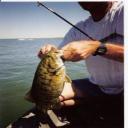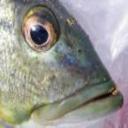Yahoo Answers is shutting down on May 4th, 2021 (Eastern Time) and beginning April 20th, 2021 (Eastern Time) the Yahoo Answers website will be in read-only mode. There will be no changes to other Yahoo properties or services, or your Yahoo account. You can find more information about the Yahoo Answers shutdown and how to download your data on this help page.
Trending News
When fishing a new lake or body of water for the first time, what are some of the most beneficial things to do?
to ensure a successful day on the water?
11 Answers
- Golden FeatherLv 41 decade agoFavorite Answer
As I figure you would know,:) get the best topographical map and study it well. Find where old river/creek channels swing close to shore, points or bluff walls. A lot will depend on the time of year and water temp. (spring, summer, fall, winter)
Also look for structure near or at these places (stumps, standing timber, grass, etc.) Off shore humps, islands are always worth looking at specially if cover is present.
You can also try looking on line for fishing reports on the lake, as well as trying to get the phone #'s of local bait stores.
This should give you a pretty good lay out of the lake, then its just a matter of trying to find the places that fit your strong techniques.
Weather and water temp will play a big role as well as all the above. Fronts, wind, clouds, etc. Pre-front has always been better for me than post front.
Good Luck, and nice to see you back on "A" again !
- Swamp ZombieLv 71 decade ago
1.) Have some type of "game-plan" for the morning ,afternoon & evening. However, have the ability to change the "plan" according to what the Fish are reacting/telling you. (Example- Topwaters/Buzzbaits in the Morning. Flipping structure by noon. "Waking" Spinnerbaits by evening. ETC) Breaking the day up into "sections" ensures you try DIFFERENT techniques......
2.) Having and preparing a Map with marked locations is a must.
3.) All rods & reels "tuned and ready".
4.) Boat-gear & Misc tackle is stowed in it's proper place.
5.) Paying attention to everything and anything that looks out of the ordinary. Not JUST weird "structure", but bait hatches/insect hatches, reptile populations, any "strange" current direction, ETC.
Here's a weird trick I always do when fishing new water, (esp during tourneys). (if legal) I'll fish the area adjacent to the ramp!
Launching/trailering boats kick up a BUNCH of debris and possible injured baitfish/forage. People tend to "race off to another part of the Lake" to fish and ignore the area within sight of the ramp! What happens is, the "ramp fish" see far less lures than the "jungle fish", and are not as finicky about taking lures.
(You already know all this stuff....)
- 1 decade ago
A lake map can help a lot to figure out where different depths and drop offs are. A local sporting goods store will have a book of maps or single maps for the lake you want to fish. Also, some states' department of national resources will post maps online. Other than that it depends on the fish you are targeting and the time of year.
- Anonymous1 decade ago
I know the county I live in if I'm going to a forest preserve lake or park pond they have depth charts and information on what it's in the lakes and some tips on how to catch those fish.
I like to take my time finding the right spot if no maps are available.I make note of watching where the older guys are fishing.The majority of the time they'll even help you if you strike up a conversation.I'm always glad to tell people what I know.
I always fish from shore so the second paragraph really only makes sense for others like me.
- How do you think about the answers? You can sign in to vote the answer.
- pheasant tailLv 51 decade ago
Although not my forte, perhaps some of the things I do when I try
new water when fly fishing will translate
1) Talk to the locals, they know more than we do
2) If unsuccessful with # 1, fish structure: docks, brush pilings,
inlets, etc.
3) If using a fish finder, look for river channels and drop-offs
4) Don't be afraid, if what you're doing is not working, try something different
5) Don't be discouraged, make notes of what you did and where you fished, and next time try different places and techniques.
Tight Lines,
Pheasant Tail
- Anonymous1 decade ago
As Xero said above, maps of the lake are invaluable. Also, watch what the locals do especially the guys who are catching fish. I don't recommend you crowd them though. Buying a few beers and spreading them around at a local watering hole will usually lubricate the patrons to share some of their "spots", baits and technics.
- ArtieLv 71 decade ago
if you can not find a topographical map and you are on the water. I will first thing in the morning find the steepest cliffs cascading into the lake and fish there hoping the schooling bass are corralling the bait against the cliff in order to feed easily (always have a fat rap on one of your rods) (In spring) before the sun actually gets up I will then look for rolling hills along the lakes side (the flattest ones) I (in my head) imagine the lake bottom near this area to be relatively the same and I want to find any bass beds in a near shallow relatively flat bottom. in summer I will look for long points and peninsulas to fish off from both sides not really focusing on the flats but the drop offs surrounding the flat. I will go one way slow rolling a spinnerbait and then come back around throwing a crankbait and then around once again throwing a jig and if there are tree stumps (widow makers) all the better however if there are trees?? it isn't "that" deep. I like to find rock piles or underwater hills or even submerged roads to fish near to as in summer the fish are way past post spawn schooling usually so they will hold on mostly secondary and tertiary submerged structures where semi shallow is very close to very deep (in order to get away) water. I like to fish plastic crawdads and deep diving cranks and even colorfull patterns too. I love fishing in dammed lakes and in the heat of the day (from 11:00am - 12:30 pm) I will fish in the middle on the deepest bottom I can find with the biggest worms made 12-15" and 3/4 " thick is not too big... The biggest bass will be down in the coolest water and they won't open their mouth unless you are feeding them a big bait. in the early afternoon I like throwing plastic lizards against (sun drenched) cliffs trying to knock sand and dirt into the water before I pull my stuck lizard off the wall into the water. if I haven't been bit yet then I go back to the sidelines focusing on weed lines and fishing the shadowed sides of the weeds and or downed trees with plastics mostly finnessed and split shot rigged. It's 3:00 and I still haven't been bit yet I go look for boat docks and fish them with jigs and pigs the rest of the afternoon. and as the sun is falling I go back to the cliffs or straights or islands and fish top water pencil poppers and stick baits (especially over deeper water)
Source(s): Good luck mate - 1 decade ago
Well it depends what species you are fishing for but obviously you will do the simple things like ask locals, look for schools of bait, and fish near structure.
- Anonymous1 decade ago
1. Find out if there are any water snakes in that pond.
2. Find all the obstacles in the water BEFORE diving from your row boat to retrieve your hung up crankbait.
3. Determine the depth of the water by walking out in it.
Hope these help!
- Anonymous4 years ago
it extremely is spoke of as hemoragic septisemea, I have been given the spelling incorrect inspite of the undeniable fact that curiously like its spelled, you could attempt to handle it with tetricycline, or yet another form of antibotic for fish tanks yet I actual have been a fish hobbiest for 25 years and the form of ailment in lots of circumstances leads to a fatality, yet you're able to desire to be able to maintain those that don't have it as undesirable.








